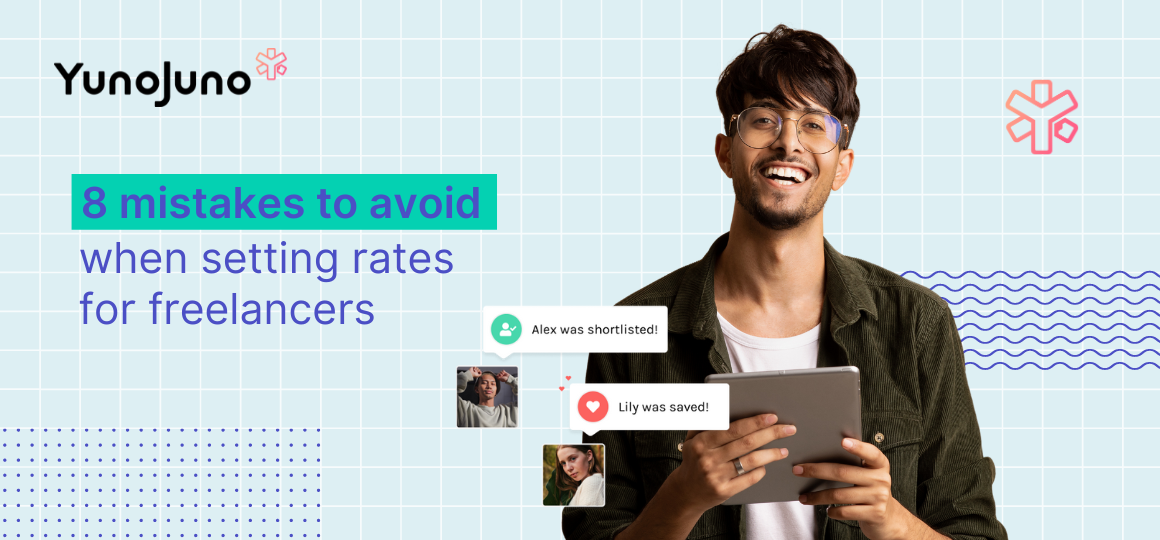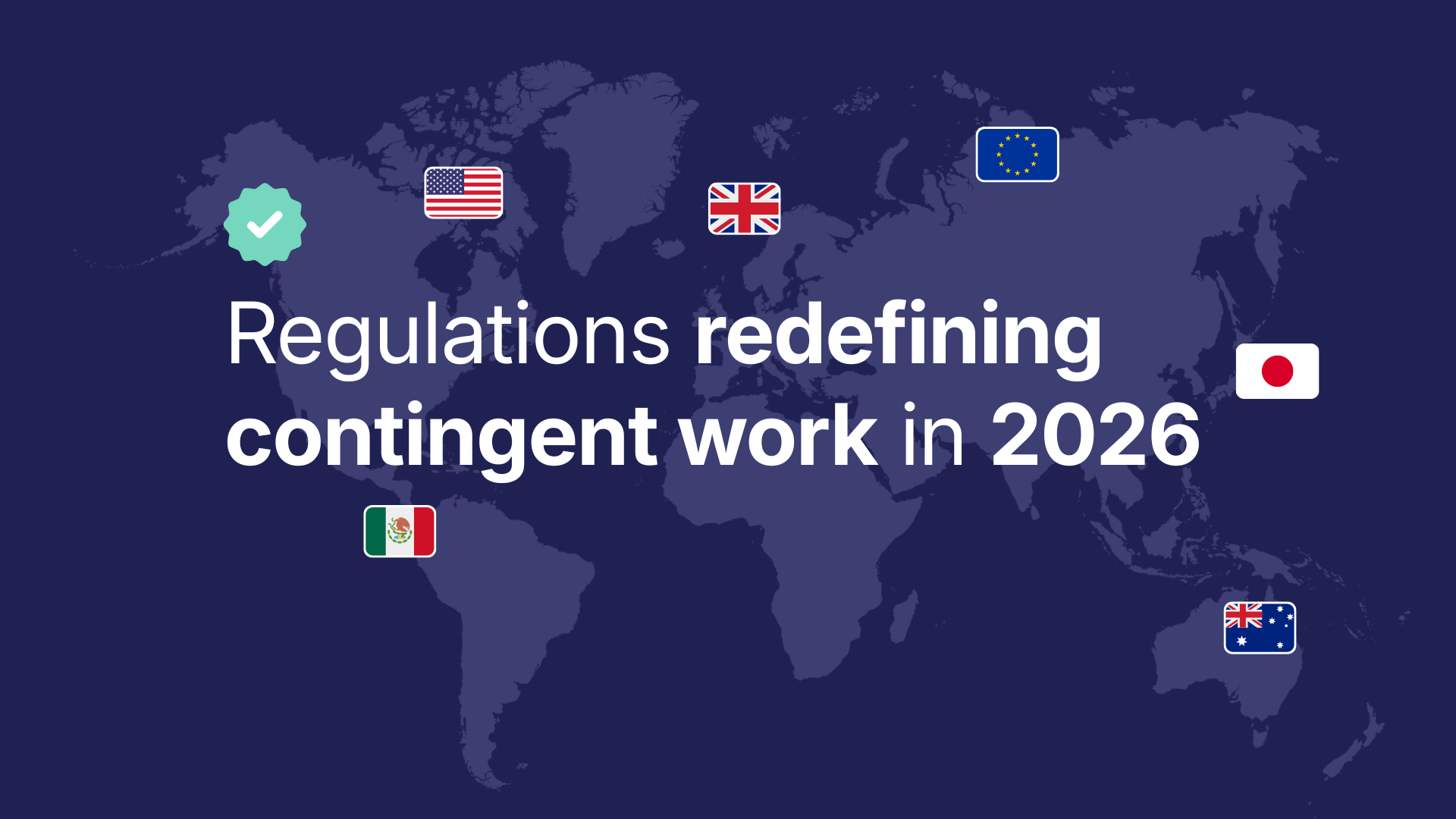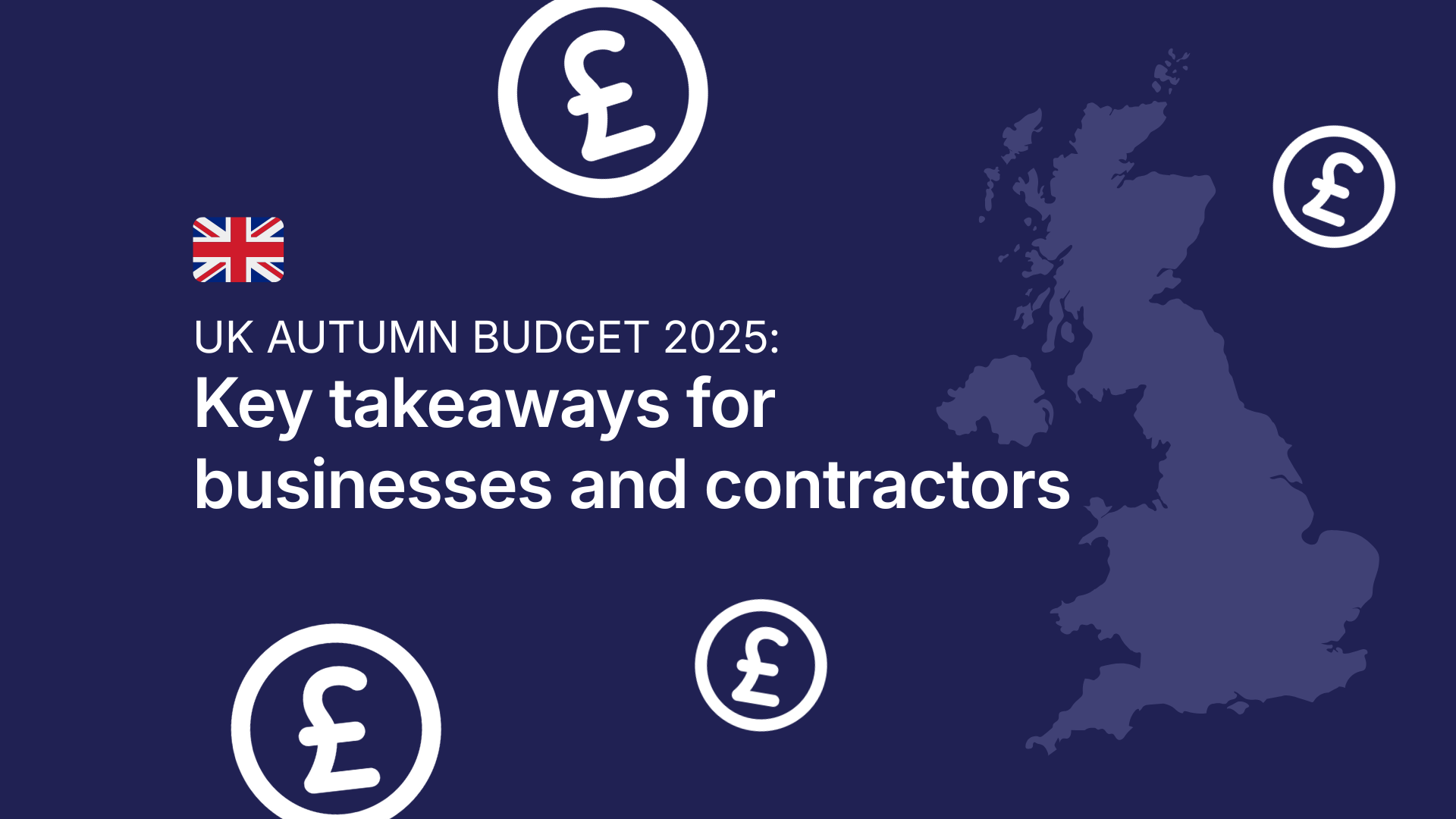Hiring freelancers offers a range of benefits to businesses of all shapes and sizes, including flexibility and access to specialised skills. However, determining the right rates to pay freelancers can be challenging and getting it wrong can lead to problems from the moment you start trying to bring a freelancer on board.
To improve your chances of getting it right, here are eight common mistakes to avoid in order to ensure a fair, competitive and successful collaboration.
1. Basing rates on market minimums
While it's tempting to minimise costs, paying only the market minimum can lead to lower-quality work and reduced freelancer motivation. Consider the value the freelancer brings to your project and set rates that reflect their expertise and the complexity of the work involved.
If you’re wondering what the market rate for freelancers is, check out our latest freelancer rates report. Get a breakdown of rates by industry and specialism based on data from over 98,000 YunoJuno contracts to get a more accurate idea of how much you should budget to bring top-tier freelance talent onto your projects.
2. Not considering the freelancer's experience and expertise
Experienced freelancers with specialised skills typically command higher rates. For example, in our 2024 Freelancer Rates Report we found that a Data Engineer is paid £640 per day on average compared to a Data Marketer at an average of £327 per day. This difference matters when, for example, you need the services of a Data Engineer but don’t have the budget for that specific skill set.
It goes without saying that paying a premium for their expertise can lead to better outcomes for your projects. Assess the complexity of your project and seek out freelancers whose rates align with their level of experience and the quality of their portfolio.
3. Ignoring project scope and complexity
Every project is unique. A one-size-fits-all approach to setting rates can lead to underestimating the time and effort required for more complex tasks.
Knowing average contract lengths by discipline can help you work out if you’re over or underestimating the amount of work required. For example, looking at contract length data for designers, the average contract length for a product designer is 35 days, whereas for a presentation designer, it’s just 4 days.
4. Overlooking the importance of deadlines
Tight deadlines may require freelancers to prioritise your project above others, sometimes working odd hours to meet your needs. Consider offering higher rates for urgent projects to compensate for the inconvenience and additional pressure.
5. Failing to budget for revisions and extras
You likely don’t need to be reminded that projects rarely go exactly as planned. Expect the unexpected and allow for the possibility of revisions or additional requests beyond the initial scope. Setting aside a portion of your budget for these eventualities can prevent you burning through the budget way ahead of the project delivery.
6. Neglecting to re-evaluate rates periodically
The freelance market is dynamic, and rates can change based on demand, inflation, and the evolving skill set of freelancers. Regularly review and adjust the rates you're willing to pay to remain competitive and fair.
Luckily, at YunoJuno we revise our freelancer rates report annually so you can always keep up with the market expectations across a wide range of disciplines.
7. Not communicating clearly about rates and expectations
Another significant mistake is failing to have open and clear discussions about rates and project expectations from the outset. This can lead to misunderstandings and dissatisfaction on both sides.
You should also ensure that the agreed-upon rates are documented in a contract, along with project scope and timelines. YunoJuno helps you to create watertight contracts to protect both you and your freelancers. Find out more about using YunoJuno to manage your freelance talent.
8. Overlooking long-term collaboration potential
One mistake often overlooked by companies when setting rates for freelancers is failing to consider the potential for long-term collaboration. Offering rates that are fair and competitive not only ensures the immediate success of a project but also lays the foundations for a positive working relationship that could lead to future collaborations.
Freelancers who feel valued and fairly compensated are more likely to prioritise your projects and offer their best work consistently. By recognizing and rewarding the value a freelancer brings over time, companies can build a reliable network of talent ready to support their needs, leading to a more stable and efficient outsourcing model. This approach encourages loyalty, reduces the time spent onboarding new freelancers for each project, and ultimately contributes to a more productive working relationship.
Looking to start building your network of top-tier freelancers? Check out our industry-vetted community of freelance talent.







